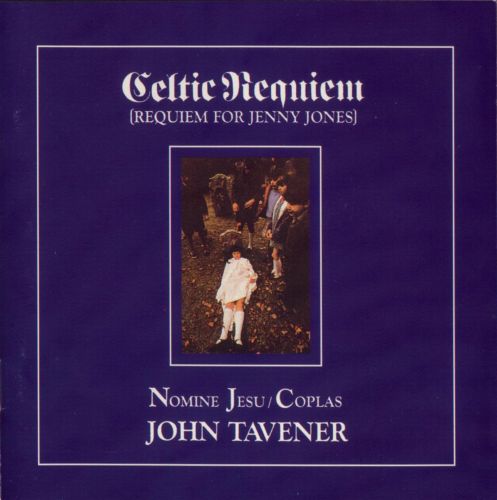

This work sprang from three-fold inspiration: a commission for a new work to be performed on the South Bank in the summer of 1969, a trip to Ireland (where Tavener developed a deep love for the country's beauty and Catholic heritage) and the discovery of a book by David Holbrook describing the history of popular children's games, a surprising number of which are connected with death (hopscotch, for instance, originally represented the path through life to death, swinging originated as a ritual to release souls form purgatory, and "ring around the rosey" is said to be a reenactment of the progress of a case of the Black Plague).
The work is, thus, three-tiered. In the foreground are the children's games with their traditional melodies (foregrounded literally as well as musically -- hopscotch is played in front of the concert platform, and there is a swing set up on stage). The second tier is based on Irish ballads about death, and the third tier comprises music for three sections of the requiem mass (the Requiem aeternam, Dies irae, and Requiescat in pace), interspersed with Cardinal Newman's hymn "Lead Kindly Light" and a setting of "They Are All Gone into the World of Light," by the seventeenth-century mystic poet Henry Vaughan.
The work is scored for high soprano, chorus, clarinet, trumpet, trombone, organ, piano, strings, Irish bagpipes, percussion, electric guitar, and children (who sing and play the games).
The children enter, carrying their props, through the audience, as the orchestra plays a very quiet E flat chord. Their games are synchronized to the music.